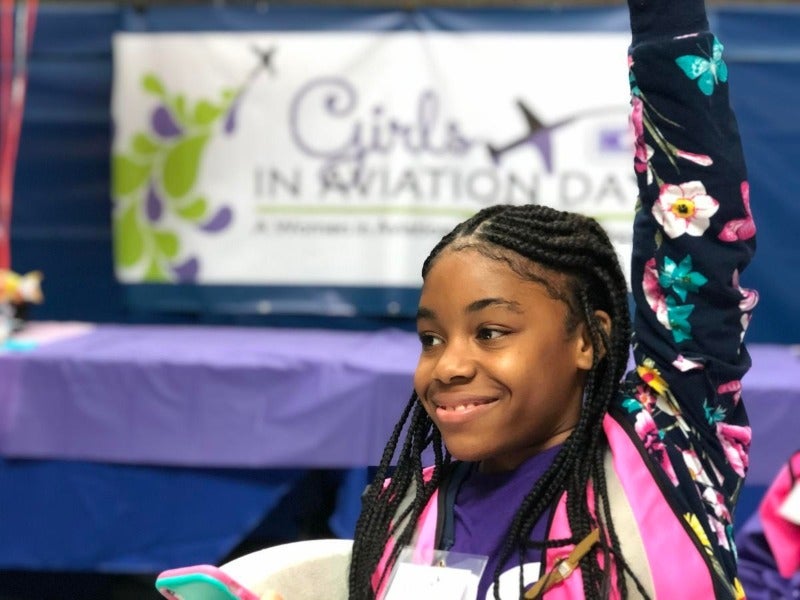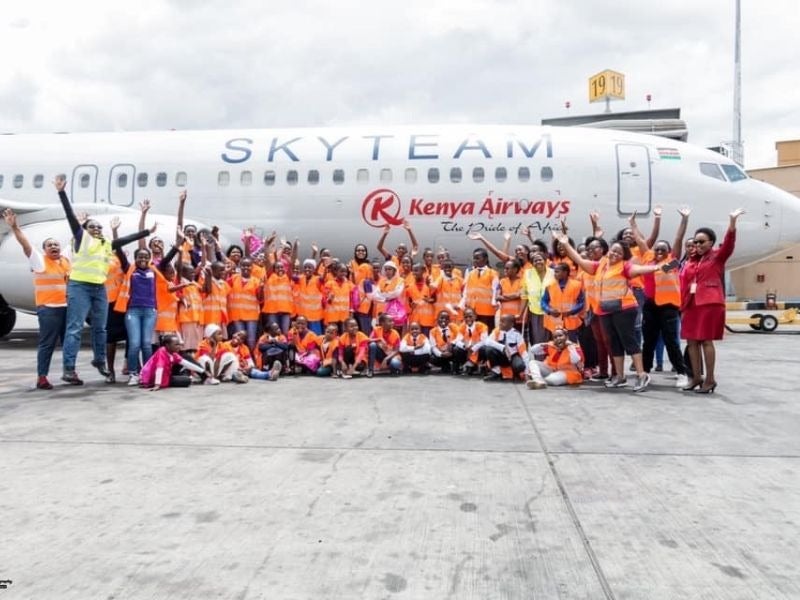
According to the Workforce Report from non-profit Women in Aviation International, women made up about one-third of the workforce in 1950 compared to 46.9% of the workforce in 2018.
At the airport, 16.7% of FAA air traffic controllers are women and the figure is around the same for airport managers.
In some areas of aviation, however, the representation is even lower, especially female pilots at commercial airlines where the average is 5.18%. United Airlines has the highest share at 7%, but it falls to as much as 1% at Norwegian, easyJet falls between the two at around 5% and British Airways at 5.9%.
Female representation is even lower in the boardroom where only 3% of CEOs and COOs are women and in the world’s top 100 airline groups 8% are CFOs.
Before the global coronavirus pandemic, the gender gap was expected to continue to narrow and the women’s labour force expected to become more diverse. However, the impact of this devastating event on the aviation industry means that previous figures are less reliable as predictors and the future now rather more uncertain.
We spoke to new Women in Aviation International CEO Allison McKay about the advancement of women across the industry, from education to empowerment.
How well do you really know your competitors?
Access the most comprehensive Company Profiles on the market, powered by GlobalData. Save hours of research. Gain competitive edge.

Thank you!
Your download email will arrive shortly
Not ready to buy yet? Download a free sample
We are confident about the unique quality of our Company Profiles. However, we want you to make the most beneficial decision for your business, so we offer a free sample that you can download by submitting the below form
By GlobalDataFrances Marcellin: Congratulations on becoming CEO of WAI. What does the position mean to you?
Allison McKay: This is a career-defining opportunity for me and I was thrilled to be able to take on this challenge. I have been supported my entire career by mentors that inspired me. This is what Women in Aviation International is all about. Creating a sense of community for our members and the network to continue to inspire us to reach our goals. That is especially true now, in a climate that has us physically distancing ourselves from others. This virtual community, whether it is through our Chapter initiatives or our mentoring network, is incredibly important.
FM: What are your goals for the WAI?

AM: My goals for our organisation are simple: create programmes that support women at all stages of their education and careers. In addition, I want to strengthen our partnerships with organisations that have the same goal as we do, and industry with a strong and diverse workforce for decades to come.
FM: Can you share some information about initiatives you’re launching which encourage women to “follow their own personal aviation dreams”?
AM: The only way we can address the significant workforce requirements over the next twenty years is to focus on attracting increased diversity. The percentage of women and minorities that are in the aviation industry has largely remained unchanged over the last five years. It is critical that we attract women into this industry and to do that we need to engage children starting in elementary school. Our Girls in Aviation Day events continue to attract more and more young women interested in careers in aviation. My goal is to create additional programming throughout the year to continue to engage these girls back in their schools and communities through project-based learning activities.
FM: In which areas are women under-represented the most in aviation?
AM: The data show that women are underrepresented in all fields of aviation except maybe flight attendants. In fact, women are underrepresented in most STEM fields.
FM: How does WAI work to increase the number of women in the industry, from commercial airline pilots to CEOs?

AM: WAI is actively working to introduce more women to all areas of aviation, but our view is long-term in nature and multi-faceted. WAI recognises that to affect the representation of women in aviation and STEM in a meaningful way, we have to engage girls at the ages of 8-17. Our Girls in Aviation Day programme, now in its 6th year, has reached over 50,000 girls all over the world.
The programme, run locally all over the world by WAI chapters and corporate members, works to introduce girls to all the opportunities available to their future through aviation professions. We feature female role models and mentors who are executives, air traffic controllers, engineers, pilots, aircraft mechanics, manufacturers, computer scientists, astronauts, drone pilots, airport managers and more.
We’ll hold our 6th annual Girls in Aviation Day, social distancing permitting, on 26 September 2020. GIAD participants also receive Aviation for Girls magazine [as part of] a free six-month digital membership to WAI, so they’re able to participate in WAI member-only programmes such as the WAI chapter programme, mentorship programme, and the scholarship programme.
FM: How does your scholarship programme support WAI members?
AM: Just weeks ago, we awarded over $831,000 in scholarships to over 100 WAI members in all areas of aviation. Cumulatively, WAI has helped thousands of girls and women reach their goals and realise their aviation dreams through over $13.2 million in scholarship awards over 20 years.
GIAD participants will also receive digital content from WAI in the way of a monthly e-newsletter, a bi-monthly copy of our magazine Aviation for Women and other regular WAI communications.
FM: How important are mentors and outreach in schools and communities to boost numbers of women in aviation?
AM: Astronaut Sally Ride used to say, “If you can see it, you can be it.” Our magazine Aviation for Women and all our publications, our WAI mentorship and networking initiatives, and Girls in Aviation Day are all in position to bring visibility to the women out there “doing it” in all areas of aviation and aerospace.
We are inspired every day by our members, their creativity, their generosity, their tenacity, their intellect, and their passion, and it’s our pleasure to help them share their stories.



